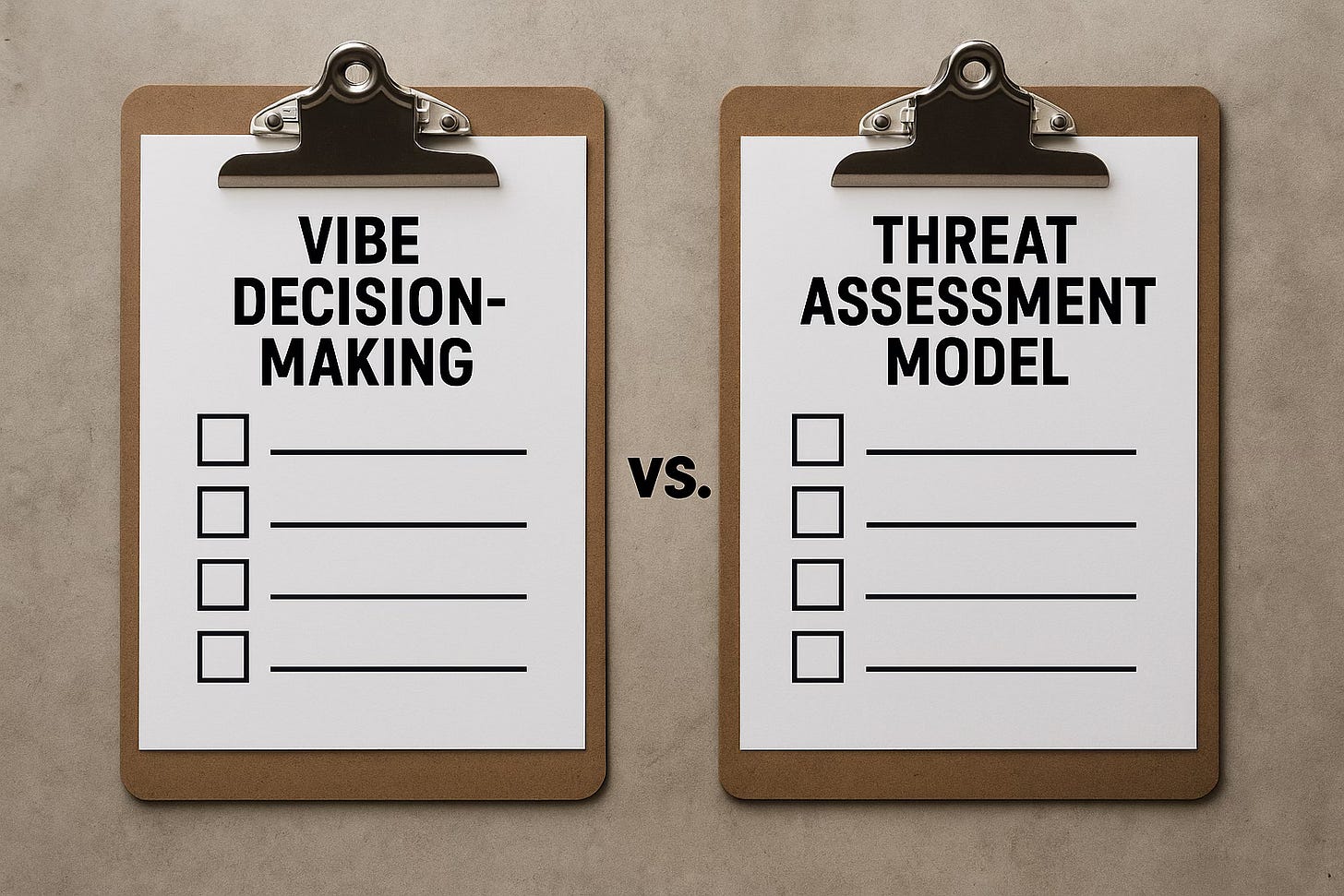Vibes are not a strategy
When decisions are made in secret and without a threat model, everyone else pays the price. Including you.
On Friday, a major U.S. military strike lit up the Middle East. Within 36 hours, we saw coordinated retaliatory attacks on American bases in Qatar and a mysterious wave of outages and service disruptions across major U.S. tech platforms.
No official link has been made. But anyone with a systems brain can see the pattern.
The real kicker? According to multiple reports, the strike was based more on "vibes" than verified intelligence. That tracks. We've entered an era where secret decisions—military, political, even corporate—are increasingly made based on instinct, ego, or narrative spin. And the rest of us keep paying the price.
Secret moves, public consequences
Let's set aside the geopolitical complexity for a second. What matters here is the pattern. A high-stakes action was taken without proper communication, coordination, or visible threat modeling. The blowback was fast and wide, impacting civilians, companies, and digital infrastructure that had nothing to do with the original decision.
And even though Iran reportedly gave advance warning, an extraordinary move that helped prevent casualties, damage still occurred. In interconnected systems, advance notice doesn't always mean protection. Think of it like a DDoS attack: once the signal is sent, the system floods.
Now, imagine making a similar move in your business, product, or AI deployment without a model for how it might fail, be misinterpreted, or trigger unseen reactions. You might survive the first strike. But what about the chain reactions?
Vibe-based leadership is everywhere
We tend to think this kind of "vibe-based" decision-making is a political problem. It's not. It's a leadership disease, and it's spreading.
In tech:
Founders greenlight new products without stakeholder alignment or risk assessment.
AI features ship without scenario planning or ethical safeguards.
Companies rebrand or pivot with no communication strategy, then act shocked when customers leave.
In business strategy:
Executives chase trends instead of mapping needs.
M&A deals happen with zero post-integration planning.
Critical decisions are outsourced to instinct, then covered with PR spin when things go sideways.
The truth is, in high-stakes systems, vibes are a liability. Not because instinct is useless but because it's not enough.
Threat modeling is your cheapest insurance
Threat modeling doesn't need to be complicated. At its core, it means asking:
What could go wrong?
Who else is affected?
What do we do if it does?
If that sounds obvious, good. But it's almost always skipped in real-time systems, whether you're launching an AI product, making hiring changes, or deploying geopolitical force.
The irony? AI itself can help with this. Modern AI tools can run simulations, pressure-test decisions, and surface threats across complex networks. They can process more edge cases, signals, and variables than any human strategist. But the final judgment still needs to come from human intelligence, not ego, and definitely not vibes.
Smart leaders combine both. They build tools to map complexity and teams to interpret it. They replace secrecy with scenario planning. And they communicate early because in fragile systems, the longer you wait, the more you break.
Bottom line
If you're leading anything with real stakes right now, a company, a team, a product, or a platform, you need a threat model. Not a manifesto. A model. Something you update, revisit, pressure-test, and learn from.
Because even when the system gives you a warning, it's often not enough. And most of the time, you won't get a warning at all.
At Terra3.0®, we help founders, operators, and policy leads pressure-test their assumptions and build better threat models for high-stakes systems.
If you're tired of guessing and want a clearer way forward, get in touch or leave a comment. We'll help you see what others miss and act before it's too late.




